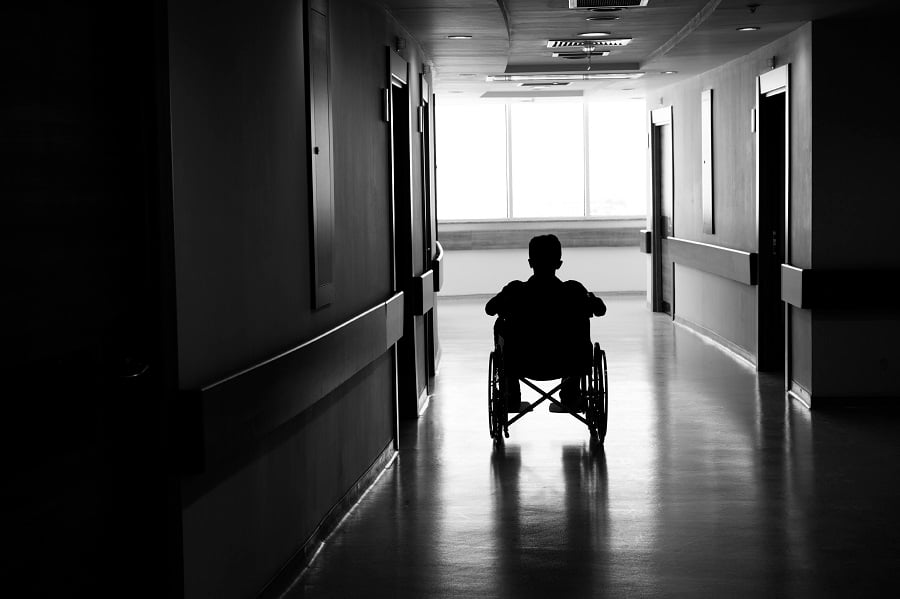

I’ve been writing about long-term care issues for about 40 years, and I don’t think I’ve ever written a positive news story on the topic. This one is no exception.
It’s frustrating because the possibility of needing care later in life is a real concern for retirees, their families and their financial advisers, particularly as traditional protections such as stand-alone long-term care insurance become a dwindling option for all but the healthiest and wealthiest of clients.
Many retirees worry whether they can get the care they may one day need without exhausting their financial resources and their family caregivers. Fear of dependency makes some retirees reluctant to spend down their 401(k) balances, depriving them of a more comfortable retirement.
The Covid-19 pandemic made a bad situation worse by casting a harsh light on nursing homes and assisted living facilities, as a disproportionate number of the virus’s victims were residents of such facilities. But the need for long-term care planning and funding remains.
A new report from the Center for Retirement Research at Boston College, the second in a three-part series, explores the extent to which retirees’ combined financial and nonfinancial resources could meet different levels of need for care. An earlier CRR report concluded that about 20% of retirees will escape the need for long-term care services and 25% are likely to experience the type of severe needs that most people dread.
The latest report estimates that more than one-third of individuals don't have enough resources for even a year of minimal care, and only 21% could cover several years of long-term care needs. The CRR researchers considered informal care from family members as well as paid care in projecting who had the resources to access long-term care if needed.
Not surprisingly, marital status plays an important role is projecting who will get the care they need. The report found that married individuals, those with college educations and whites have more resources for long-term care needs.
Only 5% of Black and Hispanic individuals have the ability to cover severe long-term care, defined as three years or more of intense care, lagging behind 25% of white households. However, a much higher share of Hispanics — nearly two-thirds — end up in the group that cannot cover even a year of care, compared to about half of Blacks and one-third of white retirees.
Households can provide for care needs in two ways. The more common way is unpaid informal care provided by family members. CRR researchers Anek Belbase, Anqi Chen and Alicia Munnell estimate that 60% of total caregiving hours for individuals aged 65 or older is provided by family members, including spouses, children and another relatives. The less common way is paid care, financed either out-of-pocket or through long-term care insurance or Medicaid.
Paid care, either at a long-term care facility or at home, is costly. The national median cost for a private room in a nursing home topped $105,000 per year last year, according to the Genworth 2020 Cost of Care study. That represents a 62% increase in nursing home costs since Genworth first conducted its annual cost survey in 2004. The average cost of an assisted living facility was $51,600 last year, slightly less than home care, which cost nearly $55,000 per year based on 44 hours per week of care.
But few are prepared to cover those costs. Only 11% of adults over 65 have long-term care insurance, according to the CRR report. Medicare covers only post-hospital nursing home care for up to 100 days and generally does not cover home care. Medicaid does cover nursing homes and some states offer home care coverage through their Medicaid programs. But Medicaid requires that people exhaust their assets to qualify for benefits.
Individuals who enter retirement married have the most resources to handle their care needs, and women who enter retirement unmarried have the least, according to the CRR report.
“This finding is not surprising since married individuals tend to be wealthier and have a spouse to rely on for care,” the report said.
I guess those marriage vows of “until death do us part” really do mean something. But even married women aren’t guaranteed to receive the care they need, as I noted in an earlier column. When their husbands need long-term care, wives often are there to provide it. But because women tend to outlive men by about five years on average, there may be no one to provide care for them when they need it.
Almost 70% of women aged 75 or older are widowed, divorced or never married, compared to about 30% of older men who live alone, according to the AARP Public Policy Institute. More than 70% of nursing home residents are women. Their average age at admission was 80.
The big question is whether the people who will need help are the same ones who have the resources. And that's anyone’s guess.
(Questions about new Social Security rules? Find the answers in Mary Beth Franklin’s new ebook at Maximizing Social Security Benefits)

Wells Fargo, Commonwealth, UBS are the firms losing advisor teams.

Firms are facing increasing scrutiny over whether they can be held responsible for losses by clients whose ability to understand their investments has been compromised.

Decision deepens the two firms’ decade-long relationship

Linqto Inc. was one of the first tech platforms to promise access to small investors into the high-risk, high-reward world of private investments.

Since Vis Raghavan took over the reins last year, several have jumped ship.
Stan Gregor, Chairman & CEO of Summit Financial Holdings, explores how RIAs can meet growing demand for family office-style services among mass affluent clients through tax-first planning, technology, and collaboration—positioning firms for long-term success
Chris Vizzi, Co-Founder & Partner of South Coast Investment Advisors, LLC, shares how 2025 estate tax changes—$13.99M per person—offer more than tax savings. Learn how to pass on purpose, values, and vision to unite generations and give wealth lasting meaning
